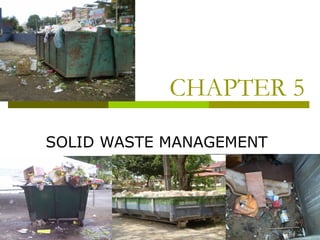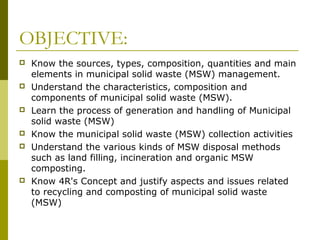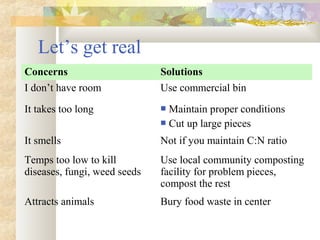This document discusses municipal solid waste management. It defines municipal solid waste and provides classifications. It describes the different types of waste generated from domestic, commercial, industrial, construction and other sources. The key methods of municipal solid waste treatment discussed are composting, incineration, landfilling and recycling. It provides details on collection and transportation of waste as well as the advantages and disadvantages of different treatment and disposal methods.
































































































































